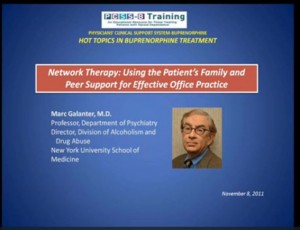Whether you are addicted to prescription opiates or street heroin, methadone treatment should be the last choice when seeking help for your opiate addiction. Many methadone treatment centers stipulate that a candidate needs to able to document at least three failed alternative treatments, before being accepted into a methadone maintenance therapy program. The reason for this is that you will still have a dependence on a synthetic opiate and must continue medication for a long period of time. If you have tried, repeatedly, to kick your addiction to opiates and failed each time, it may be time to give methadone treatment a serious try.
Methadone is a synthetic opiate that is used to curb the craving for heroin or other opiates. It blocks the euphoric feelings caused by opiates if you do use, but also allows you to function normally and helps you to maintain an opiate-free lifestyle.
Methadone works by attaching itself to the same receptors in the brain as do other opiates and pain killers. Methadone does not produce the same sensations as opiates, but also does not leave you feeling physical cravings or intense withdrawal symptoms. It does help you to feel relatively normal and its effects last up to 24 hours, requiring only one daily dose. The effects remain stable so there is no need to continually increase dosage.
Methadone treatment is probably the best option for anyone who has been addicted for a prolonged period of time and who has tried and failed at other treatment options. Unfortunately, there is no such thing as a miracle cure; it is still going to take serious work on your part to beat any addiction and the other social or behavioral problems that have accompanied it. Addiction becomes a lifestyle; being around others who are addicted or are regular users, thinking about it, talking about it, obtaining it and preparing it are as much a part of the addiction as the high. These are things that will need to be changed in order to do more than simply abstain from the drug. If these behaviors are not effectively dealt with, the chances of relapse remain high enough to be considered off the scale. Many patients in methadone treatment programs are dropped from the programs because they do not follow protocols or because they get caught selling their methadone. It can be very difficult to get back into a program once expelled or denied.
The Different Methadone therapies Available
If you are looking for a short term program, or a quick detox, there are programs designed to quickly take you down to a lower level of physical dependence, effectively lowering the amount of opiates you require on a daily basis. One type of program usually lasts about ten days and will lower the dosage your body needs but not wean you away from your addiction. This is useful if you are using prescription drugs, needing too much money to procure the amount of drug needed, or actually requiring more than your body can tolerate to maintain any level of comfort. These programs will offer you counseling, but generally will only recommend long term therapy and point you toward local NA meetings. Other programs can last from 30 days to six months, with the goal of being drug-free at the end of treatment. All programs provide counseling and follow-up services.
Long term programs will start you at a dose that will help you detox from opiates, then will find an optimum dose that will assist you to maintain a comfortable level of functioning for a long period of time. These programs will generally last a minimum of one year, and many are available for an indefinite period of time. There will be certain criteria that must be followed while in the program; such as regular urine tests; attending therapy sessions either individually or in groups; attending NA meetings regularly or finding and maintaining employment. Most clinics also offer group and individual counseling for your family members, support systems and significant others.
Most methadone clinics are outpatient clinics that will require you to come in daily for dosing and any other treatments or therapy. As you progress through the program, most clinics will eventually allow you to take your medication home; first your weekend medications and eventually progressing to monthly prescriptions.
If you are addicted to heroin or any other opiate, you must first honestly admit that your life is no longer in your control. If you are ready to take back control and make the changes necessary to accomplish this, you are already at the threshold of making a change for the better. If you have tried programs or treatment in the past and failed, it may be time to evaluate the need for methadone maintenance therapy. There are clinics across the country that can help you to beat the addiction that has taken over your life and your being. It takes dedication, perseverance and the willingness to make a real change in your life to succeed, but success is possible and a methadone maintenance therapy program may be the first step in your recovery process.



